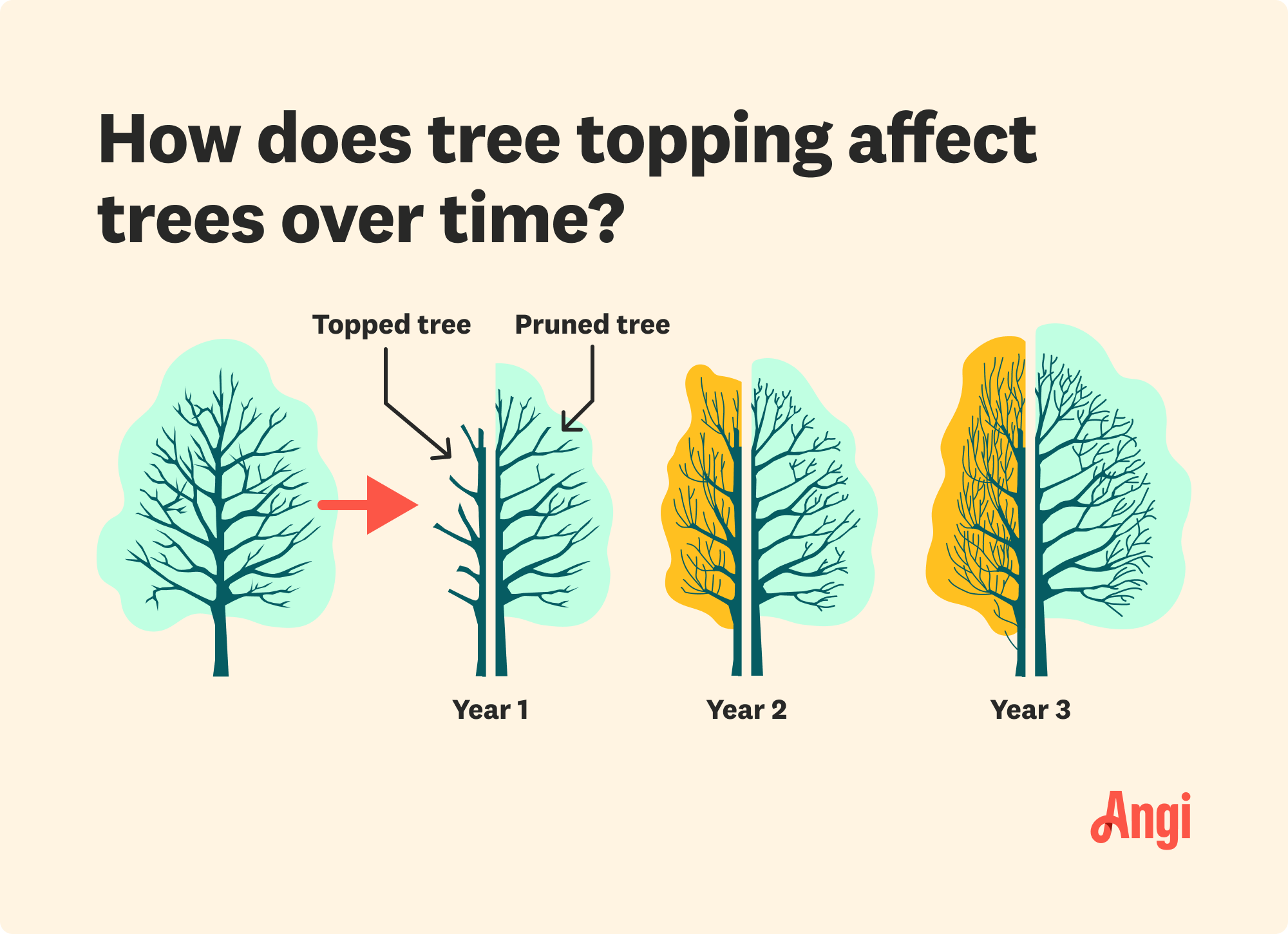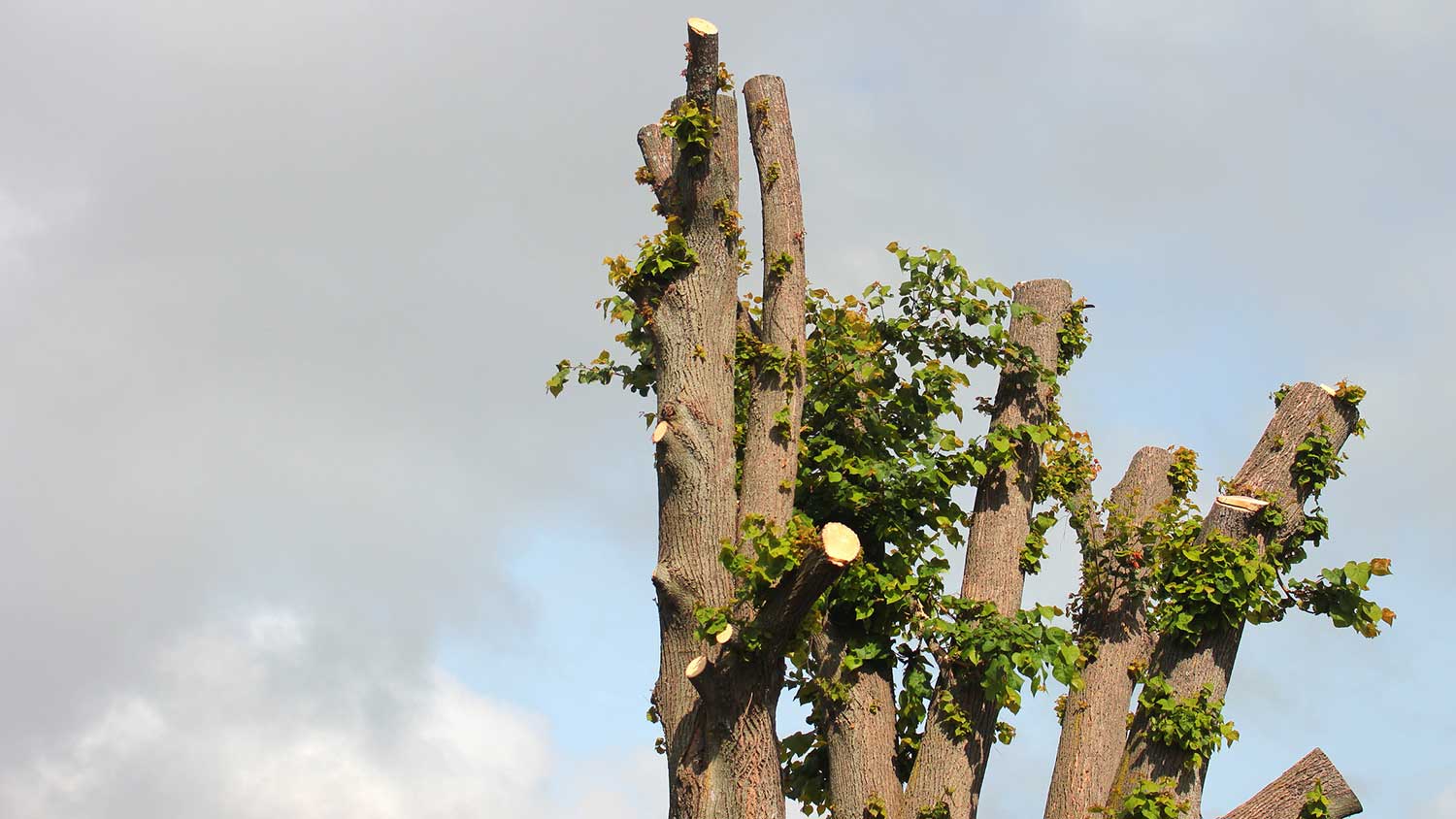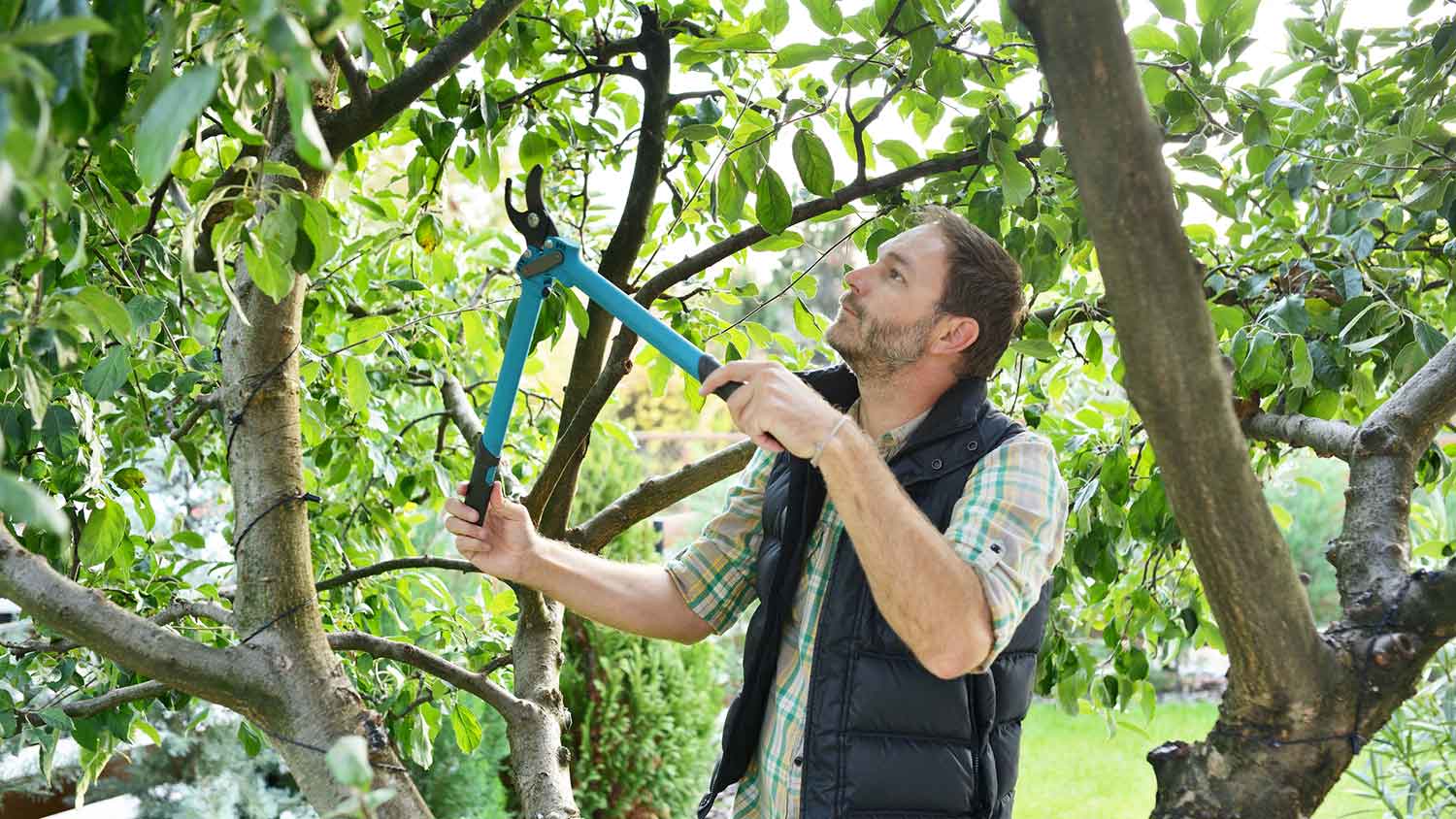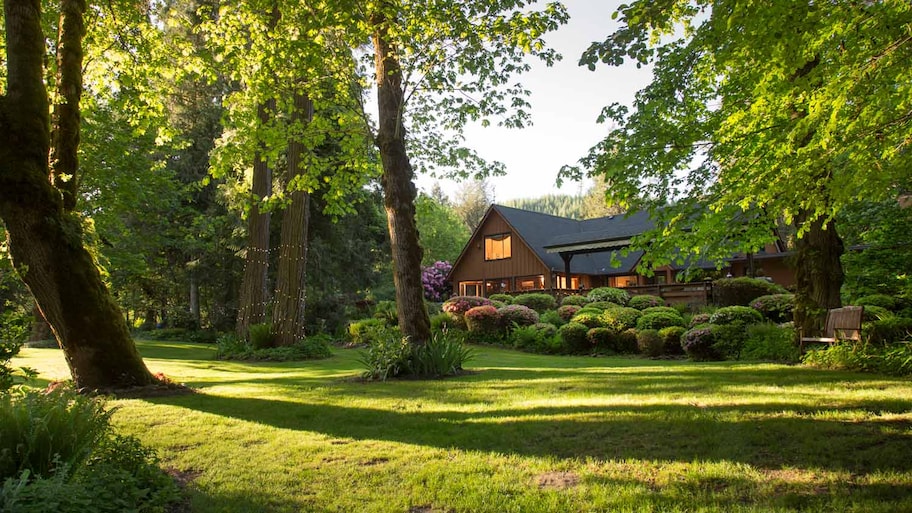Tree Topping vs. Crown Reduction: What’s the Difference?
Get a professional arborist to prune those big, unruly trees to keep them healthy, safe, and attractive


Crown reduction is the best option for tree pruning.
Only trees with severe damage should receive tree topping.
Deadwooding removes dead, dying, or diseased branches.
Tree topping and crown reduction are often confused, and many people think they're the same practice. But there are significant differences. Topping is a banned practice in many areas and is generally frowned upon by professional arborists because it involves indiscriminately removing all the top growth of a tree and can easily weaken or kill it.
That said, there are times when topping is the only way to save a tree. And then there's deadwooding, which involves only removing dead or dying portions of a tree.
What Are the Differences Between Tree Topping and Crown Reduction?
| Type of Difference | Tree Topping | Crown Reduction |
|---|---|---|
| Technique | Indiscriminate Cuts | Precise Cuts |
| Amount Removed | No Limit | No More Than 25% |
| Best Used For | Storm Damage Repair | Shape/Size Control |
Tree Topping vs. Crown Reduction: Differences in Technique
In tree topping, the tree receives indiscriminate heading cuts that ruin the crown structure in a misguided attempt to control tree size. This practice is sometimes called hat racking because once the arborist removes the tree's canopy and reduces the majority of upper branches to stubs, the remnants of the tree resemble a hat rack. Tree topping creates all kinds of problems and can easily kill a tree or make it susceptible to diseases and insect infestation.
Crown reduction, on the other hand, uses drop crotch pruning cuts. Essentially, the arborist selects parent branches that have a lateral or side branch of at least one-third of the diameter of the parent branch. Once the arborist identifies a suitable parent and side branch, they’ll cut the parent branch just above the crotch, or the point from which the lateral branch grows.

Tree Topping vs. Crown Reduction: Differences in Amount Removed
Tree topping removes a substantial portion of the tree's crown, often cutting back 50 percent or more of the tree’s height. This method can involve drastic cuts to the upper branches that lead to large, exposed stubs and can cause stress on the tree.
Crown reduction is much more conservative when it comes to removal—most arborists will remove around 20 to 30% of the crown in order to maintain the tree’s natural shape and structure. Since crown reduction is a more intentional, careful process, it helps promote the health of the tree and ensure its growth patterns are in good shape for a long, lasting life.
Tree Topping vs. Crown Reduction: Differences in Use

Overall, tree topping should rarely be used and, in many areas, it's a banned practice for city-owned trees. When an arborist removes the parent branches without consideration of the size of the lateral branches, and where lateral branches are too small, the lateral branches cannot take on the terminal responsibility of the parent branch. This can ruin the tree's natural growth habit and lead to lots of weak, leafy growth sprouts from the cut on the parent branch. This growth creates a dense canopy that's prone to fungal pathogens because there's not enough airflow.
However, there is one time when tree topping may be the only option to save a tree. If a tree has suffered severe damage from a storm or a natural disaster and much of the canopy and crown is significantly damaged, then tree topping might be the only choice.
On the contrary, crown reduction should be the primary method you opt for to control the height and shape of your trees. It's important not to over-prune, but with large, mature trees, periodic crown reduction helps to keep them safe, healthy, and manageable. To avoid shocking your tree, never remove more than 25% of its canopy at any one time.
Never opt for topping when crown reduction is an option. Hire an arborist to prune your trees. While most arborists generally consider winter the optimum time; they can perform crown reduction any time apart from spring when the tree is just starting to produce leaves.
What Is Crown Reduction?
Crown reduction is a carefully selective pruning process that aims to control the size of the tree and improve health, shape, and appearance with precise cuts. Crown reduction is the key method professional arborists use to control the shape and size of a tree. It reduces the size of the crown while leaving the structure of the crown unharmed. An arborist selectively removes live branches to decrease the height and spread of the crown and to open up the crown to increase airflow through the canopy.
When trimming trees, it's essential to prioritize safety by maintaining a safe distance from power lines, avoiding the potential fall path, and wearing protective gear. We strongly recommend hiring a professional tree service to trim large trees, given the significant safety risks.
What Is Dead Wooding?

Deadwooding is another tree maintenance service often confused with tree topping or crown reduction. Deadwooding involves seeking out and removing diseased, dying, or dead limbs. Consult with a local arborist to see if your tree needs deadwooding.
This practice helps to limit the spread of disease, makes the tree safer, and reduces the risk of falling or broken limbs.
When Should You Use Deadwooding?
If your tree shows signs of disease, you've got a split branch, or a dead limb, then you need a deadwooding service. The tree surgeon will get up near the tree's crown and identify which limbs need removing.
Remember, from the ground, you may not be able to see the full extent of the problem. So, when your chosen pro gets up there, they may find that multiple branches are affected or that, while you thought you had a single limb with storm damage, you've actually got a significant infestation of borers or a disease that's spreading from limb to limb.
DIY vs. Hiring a Pro
While you may be tempted to save a few dollars and prune your overgrown tree yourself, it’s a job that is better left to a local tree pruning professional due to its safety risks. Whether you have the right size ladder or not, pruning large trees requires skill, technique, and tools that are obtained over years by licensed arborists or tree trimmers. The cost of tree trimming ranges from $270 to $1,800, depending on the size of the tree and how much trimming needs to be done.
Frequently Asked Questions
Generally, no, tree topping isn’t a good technique, and you should avoid using it in most cases. Tree topping may be the only good option to save a tree following severe damage after a storm, but in most other cases, it’s not the right choice. Tree topping can leave trees vulnerable to disease and further damage, and most pros will suggest against it.
Tree pruning is a common and helpful tree maintenance technique that involves carefully cutting and trimming unwanted branches so that the tree can continue to grow and thrive. Pruning is done carefully and intentionally. Tree topping is a frowned-upon method that involves removing and cutting most or the entirety of the top of the tree, including structurally important branches.
A pro can guide you on the alternatives to tree topping depending on the specific issues within your trees. For example, if you’re dealing with breakage and cracks in your tree, they may suggest canopy reduction, which removes less than 25% of the tree’s limbs. If you’re dealing with lesser damage, some intentional pruning may be all you need. If you’re looking to get a clearer view through your tree, the pro may also try windowing or skirting your tree.





- Why Tree Topping Techniques Are Bad for Your Tree and Your Property
- Will a Topped Tree Grow Back?
- What To Put On a Tree After Cutting a Branch
- How to Prune Maple Tree Branches: Safe Cutting Tips for Beautiful Foliage
- What to Know About Performing Tree Trimming Safety
- What Is Eating My Tree Trunk? How to Deal with Tree Borers
- Can You Cut Down a Tree on Your Property?
- How to Tell What Type of Tree You Have in Your Yard
- How to Prune an Apple Tree for a Bountiful Harvest
- Can You Trim Trees in the Summer?










